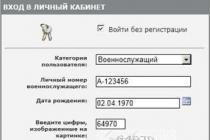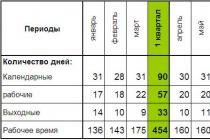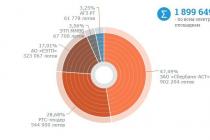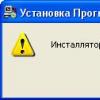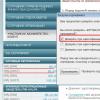Circuit breakers VA intended for use in mines, factories, power plants, or other large facilities. They are used in electrical circuit protection circuits, power distribution circuits, power supplies. They protect against short-circuit currents, long-term overloads, single-phase short-circuit to ground, decrease in supply voltage. Also used for urgent disconnection or switching on of certain sections of electrical circuits.
Automatic circuit breakers of the VA series are used in alternating current circuits, where the rated voltage does not exceed 690 V, the frequency is 50/60 Hz, and the rated current does not exceed 6300 A. They are produced for different types protective characteristics and rated currents. It depends on the operating conditions, type of circuit and type of load.
One of the features of the VA circuit breaker is the presence of a microcontroller. It helps provide programmable precision selective security. From this, the reliability of protection is greatly increased in the circuits, false trips are excluded.
Circuit breakers are subdivided into:
Installation circuit breakers have a protective insulating (plastic) housing and can be installed in public places;
- universal - do not have such a case and are intended for installation in switchgears;
- high-speed (own response time does not exceed 5 ms);
- slow-acting (from 10 to 100 ms);
The stationary installation is considered basic. There are also roll-out models; they are supplied complete with trolley and landing  nest.
nest.
The circuit breakers consist of the following main components:
Contact system;
- arc extinguishing system;
- releases;
- control mechanism;
- free release mechanism.
Contact system consists of stationary contacts, fixed in the body, and movable contacts, pivotally mounted on the semi-axis of the lever of the control mechanism, and usually provides a single circuit break.
Arc extinguishing device is installed in each pole of the circuit breaker and is intended for localization of an electric arc in a limited volume. It is an arcing chamber with a deionized steel plate grating. Spark arresters in the form of fiber plates can also be provided.
Free release mechanism is a hinged 3- or 4-link mechanism that allows disengagement and disengagement contact system both with automatic and manual control.
Electromagnetic overcurrent release, which is an electromagnet with an armature, provides automatic disconnection of the circuit breaker at short-circuit currents exceeding the current setting. Electromagnetic current releases with a hydraulic slow-down device have a time delay inverse to the current for protection against overcurrent currents.
 Thermal overrun release is a thermo-bimetallic plate. At overload currents, the deformation and forces of this plate provide automatic tripping of the circuit breaker. The time delay decreases with increasing current.
Thermal overrun release is a thermo-bimetallic plate. At overload currents, the deformation and forces of this plate provide automatic tripping of the circuit breaker. The time delay decreases with increasing current.
Semiconductor trip units consist of a measuring element, a block of semiconductor relays and an output electromagnet that acts on the automatic release mechanism of the machine. A current transformer (AC) or a magnetic choke amplifier (DC) is used as a measuring element.
The semiconductor current release allows the following parameters to be adjusted:
Base current of the release;
- setting for the actuation current in the zone of short-circuit currents (cut-off current);
- settings for response time in the overload current zone;
- settings for the response time in the zone of short-circuit currents (for selective switches).
In the Aleksma company you can buy VA automatic switches of various models: VA04-36, VA52-39, VA51-25, VA51-35M, VA51-39, VA57-35, VA55-43, VA53-41 and others in different versions ... You can easily place an order through the online contact form with the operator, by phone, or simply send an application by fax. We offer high quality products of our own production and production of other time-tested companies. Call us!
Circuit breakers of the BA51 and BA52 series have rated currents of 250, 400 and 630 A and are designed for operation in electrical installations with voltages up to 660 V AC and up to 440 V DC. The two-digit number 35, 37 or 39 following the series number means the rated current of the circuit breaker 250, 400 or 630 A, respectively.
The switches provide protection against short-circuit currents, overloads and unacceptable voltage drops, as well as infrequent operational switching on and off of electrical circuits. They have electric thermal and electromagnetic current releases, but they can be performed only with an electromagnetic release.
Rated currents of thermal releases have the following values: 100, 125, 160, 200, 250 A - for AB BA51 (52) -35; 250, 320, 400 A - for BA51 (52) -37 series circuit breakers; 400, 500, 630 A - for circuit breakers BA51-39, 250, 320, 400, 500, 630 A - for circuit breakers BA52-39.

The ratio of the tripping current of electromagnetic releases to the rated current of thermal releases (cut-off ratio) is within 10 - 12. The indicated ratio (cut-off ratio) refers to AC circuit breakers. Circuit breakers with thermal overload releases must operate at a current equal to 1.25 times the rated current of the release for less than 2 hours (hot).
In fig. 1.the protective characteristics of the BA51 (52) -35 series circuit breakers are shown

Rice. 1. Protective characteristics of automatic circuit breakers of the BA51 (52) -35 series: zones of characteristics from cold (1) and heated (2) states, zones of operation of the electromagnetic overcurrent release at constant (3) and alternating (4) currents.
Automatic switches VA53 (55) -37 have rated currents of 160, 250, 400 A; switches BA53 (55) -39 - 160, 250, 400, 630 A. Purpose and operating conditions are the same as those of the above-described switches BA51, VA52.
Automatic circuit breakers of the BA53 series are current-limiting, the BA55 series are selective with a time delay in the zone of short-circuit currents. The circuit breakers have a semiconductor overcurrent release and allow step adjustment of the following parameters:
rated current of the release: 0.63; 0.8; 1.0 rated current of the circuit breaker. For example, for a circuit breaker with a rated current of 160 A, the rated current of the release during regulation can be set to 100, 125 and 160 A;
settings for operating current in the zone of short-circuit currents, a multiple of the rated current of the release: 2, 3, 5, 7 and 10 - for alternating current; 2, 4 and 6 - for direct current;
settings for response time in the zone of short-circuit currents for circuit breakers of the BA55 series: 0.1; 0.2 and 0.3 s - for alternating current; 0.1 and 0.2 s - for direct current.
The time settings operate in the selectivity zone, which is limited by the short-circuit current value of 20 - 28 kA, depending on the specific type of circuit breaker. Above the border of the selectivity zone, the switches are triggered without time delay.
The tripping current in the overload zone (starting current) is 1.25 times the rated current of the release for all circuit breakers.

Circuit breakers of the VA75-45 series have one value of the rated current of the release - 2500 A; VA75-47 have a maximum release with a rated current of 2500 or 4000 A. Specified values the rated currents of the releases are also considered the rated currents of the circuit breakers. The protective characteristics of the switches are shown in Fig. 2.

Rice. 2. Protective characteristics of circuit breakers of the VA75-45 (47) series of direct (a) and alternating (b) currents: with releases 1600, 2000, 2500 A and settings in overload current zones 4, 8, 16 s, and short-circuit currents zones - 0.1 and 0.2 s
The switches are designed for installation in electrical circuits with a rated voltage of alternating current up to 660 V and direct current up to 440 V and are used to protect electrical installations during overloads and short-circuits, as well as for infrequent switching on and off of electrical circuits at rated operating modes.
The circuit breakers have a semiconductor overcurrent release and allow step adjustment of the following parameters:
rated current of the release: 0.63; 0.8; 1.0 rated current of the circuit breaker;
setting for the operating current in the short-circuit current zone are multiples of the rated current of the release: 2, 3, 5, 7 - for AC circuit breakers with a 2500 A release; 2, 3, 5 - for AC circuit breakers with 4000 A release; 2, 4, 6 - for DC circuit breakers with 2500 A release and 2, 4 - for DC circuit breakers with 4000 A release;
settings for response time in the area of overload currents 4, 8 and 16 s (with six-fold alternating current and five-fold direct current);
settings for response time in the zone of short-circuit currents (up to the upper limit of the selectivity zone) 0.1; 0.2; 0.3 s - for AC switches and 0.1; 0.2 s - for DC switches.
The selectivity zone is limited to 36 and 45 kA (rms) for AC breakers with 2500 and 4000 A releases, respectively, and to 50 and 60 kA for VA75-45 and VA75-47 DC breakers, respectively.
Automatic switches VA 21-29
 Circuit breakers of the BA 21 series are designed to protect electrical circuits from overloads and short circuits, operational switching on and off of these circuits (including asynchronous motors) and conducting current in the nominal mode. The switches are manufactured in three types: VA 21-29 - with average breaking capacity; VA 21-29V - with increased breaking capacity; VA 21-29T - for urban transport (single-pole in three-pole dimensions).
Circuit breakers of the BA 21 series are designed to protect electrical circuits from overloads and short circuits, operational switching on and off of these circuits (including asynchronous motors) and conducting current in the nominal mode. The switches are manufactured in three types: VA 21-29 - with average breaking capacity; VA 21-29V - with increased breaking capacity; VA 21-29T - for urban transport (single-pole in three-pole dimensions).
Basic technical characteristics of automatic circuit breakers VA 21-29
Three-pole circuit breakers BA51 and BA52
Automatic circuit breakers of the BA51, BA52 type are designed to conduct current in normal mode and turn off the current in case of short circuits, overloads and unacceptable voltage drops, as well as for infrequent (up to 6 per day) operational switching on and off of electrical circuits. It is allowed to use switches for infrequent direct starts and protection of asynchronous motors.
Structure symbol:
Circuit breaker series:
VA51- switches of medium switching capacity;
VA52- switches with increased switching capacity
Rated current:
35
- 250 A;
37
- 400 A;
39
- 630 A;
Number of poles and number of overcurrent releases:
3
- 3 poles with overcurrent releases in each pole;
8
- 2 poles with overcurrent releases in two poles in a 3-pole design of the circuit breaker;
Execution of overcurrent releases according to the protection zone:
3
- release in the area of short-circuit currents;
4
- release in areas of short-circuit and overload currents
Executions for additional assembly units
Drive type and circuit breaker installation method:
1
- manual drive, stationary design;
3
- electromagnetic drive, stationary design;
5
- manual remote drive, retractable design;
7
- electromagnetic drive, withdrawable design
Execution by additional mechanisms:
- absent;
5
- manual remote drive for operating through the switchgear door with a stationary circuit breaker with a manual drive;
6
- device for blocking the "off" position of a stationary circuit breaker with a manual drive;
The degree of protection of the circuit breaker in accordance with GOST 14255-89: IP20, IP00
Main technical data of circuit breakers:
Breaker rated current, A
Rated currents of thermal overload releases, A
80, 100, 125, 160, 200, 250
250, 320, 400, 500, 630
Rated voltage of the main circuit, V:
alternating current of frequency 50 and 60 Hz
Settings for the operating current of the electromagnetic overcurrent release in the zone of short-circuit currents, multiples of the rated current of the thermal overcurrent release:
at alternating current
(250, 320, 400A) 10
(250, 320A) 12;
(500, 630A) 10
at constant current
(80A) 10;
(100, 125A) 8;
(160, 200, 250A) 6
Automatic switches VA 04-36
 The VA04-36 automatic machine is designed for electrical circuit switching and automatic opening in case of short circuits and overloads, as well as for manual switching on and off.
The VA04-36 automatic machine is designed for electrical circuit switching and automatic opening in case of short circuits and overloads, as well as for manual switching on and off.
The switches can be manufactured in the following versions.
-Stationary execution, retractable, cut-in,
-Climatic performance UHL3, T.
-With electromagnetic and thermal releases
Complete set of automatic switches VA 04-36.
When ordering, switches can be completed with the following equipment
Shunt trip - a device that allows the circuit breaker to be disconnected remotely when voltage is applied. The voltage of the shunt releases can be of the following ratings.
110V, 127V, 220V, 240V, 380V, 400V, 415V, 550V, 660V AC with a frequency of 50 Hz;
115V, 220V, 230V, 380V, 400V, 415V, 440V AC with a frequency of 50-60 Hz;
24V, 110V, 220V DC.
Undervoltage release - a device that trips the circuit breaker in case of a voltage drop in the threshold value.
Electromagnetic drive - a device that allows to remotely turn on a circuit breaker when voltage is applied to the contacts of the electric drive, the electromagnetic drive can have the following ratings
110V, 127V, 220V, 230V, 240V, 380V, 400V, 415V, 550V, 660V single-phase alternating current with a frequency of 50 Hz; 220V, 380V, 400V, 440V with a frequency of 60 Hz;
110V, 220V DC.
Circuit breakers VA 47-63, VA 47-100, VA 47 + N
 Circuit breakers VA 47-63, VA 47-100, VA 47 + N are a modern generation of switching devices designed to protect circuits, as well as wires and cables from short-circuit currents and long-term overloads.
Circuit breakers VA 47-63, VA 47-100, VA 47 + N are a modern generation of switching devices designed to protect circuits, as well as wires and cables from short-circuit currents and long-term overloads.
The switches are manufactured in single-pole, pole + neutral, two-, three- and four-pole versions.
It is possible to use a switch to quickly turn on and off the network.
The possibility of sealing is provided to prevent unauthorized access to the conductors.
 1.Body made of heat-resistant ABC - flame retardant plastic
1.Body made of heat-resistant ABC - flame retardant plastic
2.Control handle
3.Indicator of the position of contacts "ON / OFF"
4. Knurled clamps for fixing external conductors
6.Electromagnetic release coil
7 arc chute
8.Space for 35mm DIN rail
9.Bimetal plate
Circuit breakers of the VA-63 series
Circuit breakers VA-63 are a modern generation of domestic switching devices the highest quality and reliability, designed for operational control of sections of electrical circuits, as well as protection against overloads and short circuits.
Characteristics of circuit breakers: in the EKF VA-63 machines, combined circuit protection is implemented: thermal (bimetallic plate) and electromagnetic (electromagnet).
The breaker arc chamber consists of 13 plates, which increases the switching durability and gives high values of the ultimate switching capacity. VA-63 have one-, two-, three- and four-pole versions and are produced with a type C actuation characteristic. For reliable connection of conductors, clamps made of anodized steel with notches are provided.
According to their technical specifications, response time and breaking capacity, automatic circuit breakers of the VA-63 series are comparable to the circuit breakers of the world's most famous manufacturers of low-voltage equipment.
 1.Casing made of heat-resistant plastic
1.Casing made of heat-resistant plastic
2.Control handle
3.Indicator of position of contacts "ON / OFF"
4. Knurled clamps for external connection
5.Contacts of increased wear resistance
6.The coil of the electromagnetic splitter
7 arc chute
8.Adjusting screw
The principle of operation of circuit breakers VA-63
The main part of the circuit breaker is thermal and electromagnetic releases. An electromagnetic release is a coil of an electromagnet connected in series to a controlled circuit, and a thermal release is a bimetallic plate, bending under the influence of overload currents. When closed, the opening springs are charged in the circuit breaker, and conditions are created for automatic shutdown when an emergency mode occurs.
When the current reaches the operating settings, the releases develop a force sufficient to bring the free tripping mechanism into an unstable state at the location of the switch latch. The force required to knock down the latch depends on the material and design of the latch assembly of the latch elements, the presence and condition of the lubricant, the coefficient of friction, etc. This explains the spread of the response parameters in the zone of short-circuit currents (protective characteristics B, C and D and for circuit breakers of modular design Israb = I set + 20%).
In the event of an emergency shutdown, a free trip mechanism disconnects the control handle from the contact system to prevent reclosing of the circuit breaker.
To bring the VA-63 into working condition, it is necessary to check the circuit breaker, namely: so that the position of the cocking handle is in the lowest position.
The main advantages of VA-63 circuit breakers
Contacts of increased wear resistance;
Limiting switching capacity 10 kA;
The number of plates in the arc chute has been increased to 13;
A channel is provided for the removal of gases;
The main contacts are made of oxygen-free copper;
The body is made of non-combustible plastic;
Contact position indicator;
Possibility of connection via comb bus;
The warranty for the manufactured equipment is 5 years; The service life of the circuit breaker is over 20 years.
A.2. General information about the VA series circuit breakers
During the operation of power grids, prolonged overloads of wires and cables, short-circuit causes an increase in the temperature of the conductive cores more than the permissible one.
This leads to premature wear of their insulation, which can result in a fire, explosion in explosive areas, injury to personnel.
To prevent this, the ESN line has a protection device that disconnects the damaged section.
Protection devices are: circuit breakers, fuses with fuses and thermal relays built into magnetic starters.
Circuit breakers are the most advanced protection devices, reliable, triggered by overloads and short circuits in the protected line.
The sensitive elements of the machines are releases: thermal, electromagnetic and semiconductor.
Thermal releases are triggered during overloads, electromagnetic - during short-circuit, semiconductor - both during overloads and short-circuits.
The most modern circuit breakers of the VA series are designed to replace the outdated A37, AE, ABM and Electron.
They have reduced dimensions, perfect structural units and elements. They work in AC and DC networks. Table A.6 provides VA data, since they are the most modern and are used in complete switchgears in the form of various combinations (PR 85, PR 87).
Circuit breakers of the VA series
Circuit breakers of the VA series of developments 51, 52, 53, 55 are intended for shutdowns in case of short-circuit and overloads in electrical networks, shutdowns in case of unacceptable voltage drops, as well as for infrequent operational switching on and off of electrical circuits.
Circuit breakers of the BA series of developments 51 and 52 have thermal (TR) and electromagnetic releases, sometimes only EMR.
VA 51 have an average switching capacity.
VA 52 - increased.
VA 51G and VA 52G are designed to protect AM with a short-circuit - rotor operating in the ASZ mode (start-up and shutdown). „
The setting of operation in the overload zone for no more than 2 hours (with heating
They are available in 2- and 3-pole versions for voltages up to 660 AC and up to 400 V at
standing current. ... |
In A 51-31-1, they are used only for op amps and have a 1-pole version.
Circuit breakers of the VA series of designs 53, 55, 75 have a semiconductor maximum release with step regulation:
* rated current of the release: 0.63; 0.8; 1.0 times the rated current of the circuit breaker.
For example, at = 160 A, you can set = 100, 125, 160 A;
* setting of operation in the short-circuit zone for alternating current - (2, 3, 5, 7, 10) for constant
yanny - (2, 4, 6)
* setting of response time at 6 AC and 5 DC - 4.8
and 16 s.
VA 53 - current-limiting, VA 55 - selective with time delay in the short-circuit zone: 0.1; 0.2; 0.3 s - for variable and 0.1; 0.2 s - for direct current.
БПР - semiconductor release unit. Selectivity is provided at short-circuit currents up to 20 .. .28 kA, depending on the specific type of circuit breaker.
At high short-circuit currents, the switches are triggered instantly (without time delay).
The tripping current in the overload zone is the same for all breakers. Maximum
the values are chosen if large current surges are possible in the protected area due to the technological process, turning on transformers or starting the EM.
With a calm nature of the load, you should choose no more than and in the absence of current surges.If necessary, the cutoff ratio can be increased in
The setting for the response time in the overload zone for more than 4 s should be taken under severe conditions of the EM start (large multiplicity starting current, a significant moment of inertia of the mechanism) or with prolonged peaks of technological overload current.
According to the conditions of detuning from inrush currents (or load peaks), it is desirable that the current and response time exceed the calculated values by at least 1.5 times.
According to the conditions of selectivity, the switch, which is closer to the power source, must have an operating time of at least 1.5 times (at the same current) the operating time of the switch below the lying stage.
Circuit breakers VA 56 do not have overvoltage releases, but have main contacts with electrodynamic compensators, which have thermal and electrodynamic resistance. Despite the absence of releases at high short-circuit currents, they are automatically disconnected.
Table A.5. Calculated dependencies for the selection of protection devices
V power networks NN
Notes.
- maximum rated current in the line, A;
- cut-off current, A;
- inrush current ED, A, - the multiplicity of the starting current, in the absence of data, it is accepted = 6,5;
- peak current, A. This is the highest current occurring in the line, with a duration of 1 ... .2 s;
(more than 5 ED in a group); (in a group up to 5 ED inclusive);
- maximum rated current in the group, A;
- starting and rated currents of the highest power EM in the group, A;
- the coefficient taking into account the starting conditions is taken: = 1.6. 2 (for severe
start, duration> 2.5 s), = 2.5 (with an easy start, the duration
Circuit breakers of the VA series are designed for alternating current circuits with a frequency of 50/60 Hz with a rated voltage up to 690V and rated currents up to 6300A. The VA circuit breaker is used in power plants, factories, mines and other large facilities in power distribution circuits and protection circuits for electrical circuits and power supplies against prolonged overloads and short-circuit currents, against an unacceptable decrease in supply voltage, single-phase ground fault, as well as for prompt switching on and disconnection of sections of electrical circuits. Depending on the type of circuits, operating conditions and type of load, VA circuit breakers are manufactured for different rated currents and types of protective characteristics.
The VA circuit breaker is equipped with a microcontroller that provides precise programmable selective protection, which ensures high reliability of circuit protection and avoids false trips. The basic installation option is stationary. A draw-out version is realized complete with a landing nest and a trolley.
Automatic switches VA 04-36, VA 06-36The switches are designed to conduct current in normal mode and turn off current in case of short circuits, overloads, as well as for infrequent (up to 6 per day) operational switching on and off of electrical circuits and are designed for operation in electrical installations with a rated voltage of up to 660 V AC with a frequency of 50 and 60 Hz and 220 V DC.Circuit breakers of the VA 04-36 series are designed for rated currents up to 400A. Automatic machines of the VA 04-36 series, depending on the type of current and voltage, have a switching capacity of up to 40 kA. Automatic switches VA 04-36 completely replace the devices VA57-35, VA51-35, VA57-35F, A3110, A3120, A3130, A3710, A3720. VA 04-36 are automatic switches of a new generation, they have a higher wear resistance under load and better weight and dimensions. |
 |
Automatic switches VA 47-29, VA 47-100Circuit breakers VA 47-29 and VA 47-100 are designed to protect electrical circuits from overloads and short-circuit currents, as well as to carry out operational control of sections of electrical circuits. The switches are manufactured with protective characteristics B, C, D (BA 47-100 only C, D). In the event of overloads in the protected circuit, the flowing current heats up the bimetallic plate. When heated, the plate bends and acts on the free release lever. In the event of a short circuit in the protected circuit, the current flowing through the solenoid coil of the circuit breaker increases many times, respectively, a magnetic field arises, which moves the core, acting on the free release lever. In both cases, the movable contact breaks off from the fixed one, the machine turns off, the circuit is broken, thereby protecting the electrical circuit from overloads and short-circuit currents.The machines have two overcurrent protection systems: electrothermal and electromagnetic, with mutually consistent characteristics. One-, two-, three- and four-pole versions are available; the circuit breakers are mounted on a 35 mm DIN rail. Wide operating temperature range from -400 C to +500 C. |
 |
Automatic switches VA 50-41, VA 50-43Circuit breakers VA 50-41, VA 50-43 are designed to conduct current in normal mode and turn off current in case of short circuits, overloads and unacceptable low voltages, as well as for infrequent operational switching on and off of electrical circuits and are designed for operation in electrical installations at rated voltage up to 440 V DC and voltage up to 660 V AC with a frequency of 50 and 60 Hz.The switches operate normally in conditions of altitude up to 4300 meters, over 2000 meters the rated current is reduced by 20%. Operation of switches is allowed at an ambient temperature of 55 ° C. Fixed circuit breakers allow front and rear connection to the main circuit terminals, and withdrawable circuit breakers - only rear connection. The working position of the fixed circuit breakers in space is on the vertical plane with the terminals of the fixed contacts upwards. A deviation of up to 90 ° in any direction in the specified plane and up to 5 ° in any direction from the specified plane is allowed. The operating position of the circuit breakers with a pull-out device in space - on the vertical plane, with the terminals of the fixed contacts upward with the possibility of turning from this position in the indicated plane by 90 ° to the left by the rated currents of the release units 250; 400; 630 A. |
 |
Automatic switches VA 57-31Circuit breakers are designed to conduct electric current in normal mode and turn off the current during overloads, short circuits and unacceptable voltage drops, as well as up to 30 operational switching on and off of electrical circuits per day. Switches 57-31 comply with GOSTs: Utilization category - A (in accordance with GOST R 50030.2);Switches of the VA 57-31 series are designed for currents of 16-100 A. Operation is allowed in electrical installations with a rated operating voltage of up to 660 volts, alternating current with a frequency of 50 and 60 Hz and up to 220 V direct current. |
 |
Automatic switches VA57-35, VA57F-35Circuit breakers are designed to conduct electric current in normal mode and turn off the current during overloads, short circuits and unacceptable voltage drops, as well as up to 30 operational switching on and off of electrical circuits per day. Switches VA57-35, VA57F-35 comply with GOSTs: Utilization category - A (in accordance with GOST R 50030.2);Mechanical design group - M3 (according to GOST 17516.1); Atmosphere type II (according to GOST 15150); Types of climatic versions of the switch UHL3 and T3 (according to GOST15150) Switches of the VA57-35, VA57F-35 series are designed for currents of 16-250 A. Operation is allowed in electrical installations with a rated operating voltage of up to 660 volts, alternating current with a frequency of 50 and 60 Hz and up to 220 V direct current. |
 |
Circuit breakers are designed to conduct electric current in normal mode and turn off the current during overloads, short circuits and unacceptable voltage drops, as well as up to 30 operational switching on and off of electrical circuits per day. VA57-39 circuit breakers comply with GOSTs: Utilization category - A (in accordance with GOST R 50030.2); Mechanical design group - M3 (according to GOST 17516.1); Atmosphere type II (according to GOST 15150); Types of climatic versions of the switch UHL3 and T3 (according to GOST15150) Switches of the BA57-39 series are designed for currents of 320-630 A. Operation is allowed in electrical installations with a rated operating voltage of up to 660 volts, alternating current with a frequency of 50 and 60 Hz and up to 220 V direct current. |
 |
Circuit breakers are designed to conduct electric current in normal mode and turn off the current during overloads, short circuits and unacceptable voltage drops, as well as up to 30 operational switching on and off of electrical circuits per day. Modular automatic circuit breakers VA 61-29, for currents of 0.5-63 A are executed: Circuit breakers of the VA61-29 series are designed for currents of 0.5-63 A. Modular circuit breakers of the BA61-29 series are designed for operation in alternating current networks with a voltage of 220/380 V, a frequency of 50 Hz, and a direct current with a voltage of 60/110 V. in electrical installations for industrial and domestic use and meet the requirements of: GOST 50030.3 |
 |
Automatic switches VA61E-29Circuit breakers are designed to conduct electric current in normal mode and turn off the current during overloads, short circuits and unacceptable voltage drops, as well as up to 30 operational switching on and off of electrical circuits per day. Modular automatic circuit breakers VA 61E-29, for currents of 16-100 A are executed:type B, C, D (for domestic use); type Z, L, K (for industrial use) Switches with UZO-DM meet the requirements of fire safety standards NPB-243-97. VA61F29 + UZO-DM circuit breakers with a leakage current release disconnect the voltage from the consumer if the current in the protected pole differs from the current in the neutral pole by an amount greater than the setting. Setting 100, 300 mA - protection against fire in case of violation of insulation of networks of industrial and domestic buildings. Circuit breakers of the VA61E-29 series are designed for currents of 16-100 A. Modular circuit breakers of the BA61E-29 series are designed for operation in alternating current networks with a voltage of 220/380 V, a frequency of 50 Hz, and a direct current with a voltage of 60/110 V. Switches are used in electrical installations for industrial and domestic purposes and meet the requirements: GOST 50030.3 |
 |
Automatic switches VA67-31, VA67-33, VA67-35, VA67-37, VA67-39, VA 67-3 (11)Automatic circuit breakers of the VA67 series are designed to conduct current in normal mode and turn off the current in case of short circuits, overloads, unacceptable voltage drops, as well as rare operational switching on and off of electrical circuits and are designed for operation in electrical installations with a rated voltage of up to 660 V AC with a frequency of 50 Nz with rated currents from 10 A to 800 A.Automatic circuit breakers are manufactured in accordance with IEC 60947-2 (GOST R 50030.2-99) Application: protection distribution networks, protection of electric motors. According to the method of protection against electric shock, automatic circuit breakers VA67 correspond to class 0 in accordance with GOST 12.2.007.0-75 and must be installed in switchgear with a protection class of at least I. The degree of protection of switchgear equipment from access to hazardous parts, ingress of external solid objects and water must be at least IP 30 in accordance with GOST 14254-96. |
Circuit breaker symbol structure:
VA XX - XX - XX XX X X - XX XX
VA - Designation of the type of device
XX - Series designation: 04, 06
XX - Symbol for rated current: 36
XX - Designation of the number of poles and the number of overcurrent releases in combination with the design of overcurrent releases in the protection zone:
- 3 poles with releases in the zone of short-circuit currents - 33;
- 3 poles with releases in the area of overload and short-circuit currents - 34;
- 2 poles with releases in the zone of short-circuit currents - 83;
- 2 poles with releases in the area of overload and short-circuit currents - 84.
XX - Designation designation for additional assembly units:
- no additional assembly units - 00;
- with free contacts - 11;
- with free contacts and shunt release - 18.
X - Designation of the version by the type of drive and installation method of the circuit breaker:
- stationary with a manual drive - 1;
- stationary with an electromagnetic drive - 3;
- retractable with a manual remote drive - 5;
- retractable with an electromagnetic drive - 7;
- cut-in with a manual drive - 2;
- cut-in with an electromagnet drive - 9.
X - Designation of the version for additional mechanisms:
- absent - 0;
- manual remote drive; to operate through the switchgear door - 5.
XX - Designation of the circuit breaker protection degree:
- IP20 - 20
- IP00 - 20
XX - Conventional designation of climatic version: УХЛ3, ТЗ


